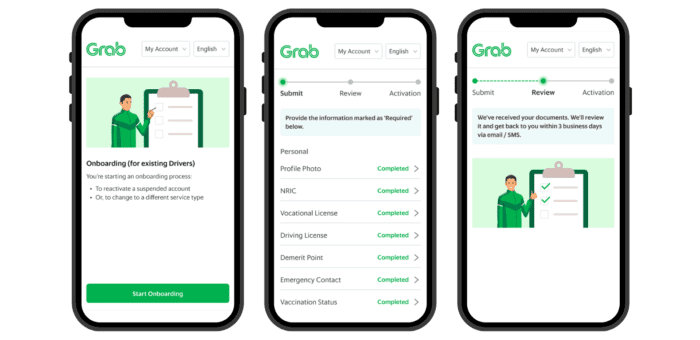Bringing dormant drivers back to Grab through a new in-app tool
When the global Covid-19 pandemic hit and people stopped commuting, a lot of driver-partners switched to other types of work.
But as the region reopens and people start going out regularly—and welcoming eager travellers back to Southeast Asia—we are seeing a resurgence of dormant driver-partners reactivating their driver accounts and coming back to Grab’s platform.
(Read more: Grab sees comeback in international travelling)
It used to be a manual process, requiring drivers to call Grab Support and initiate the reboarding. That was also time-consuming, taking an average of 18 days to complete on average.
To reduce friction for drivers, and lower our cost to serve them, we built a site allowing them to self-serve and speed up the reboarding process. This was rolled out in Singapore, Malaysia and Thailand in June 2022, and was extended to the rest of our eight markets two months later.

With drivers responding favourably to the site, we later enhanced its features and embedded its functions into the driver-app itself. In user testing, our driver-partners told us they preferred the streamlined experience because they didn’t have to access a separate web portal, and preferred only interacting with one mobile app.
The app also allows us to proactively send push notifications to the driver-partner with updates on their application status. This gave them a sense of security that their application was being processed, and also allowed us to notify them once they could begin driving with us again.
Half a year after we rolled out the tool, we found reactivation applications had gone up by 35 per cent across the region.
Today, 86 per cent of in-app reboarding activations are self-served.
Making it quicker and easier for driver-partners to reactivate their accounts helps us bring back driver supply to match the growing demand for rides. This helps balance our marketplace and keep the service reliable for users.
3 Media Close,
Singapore 138498